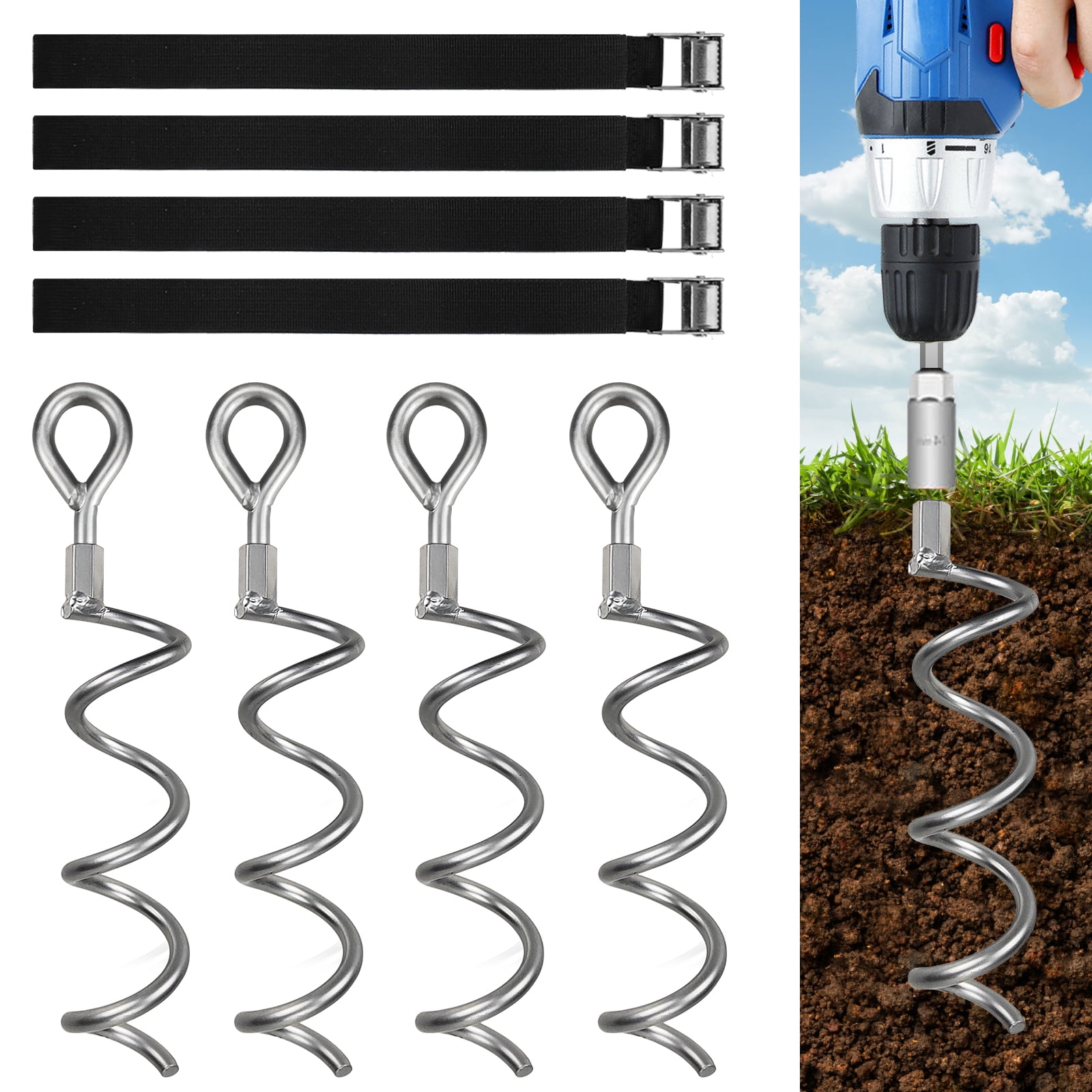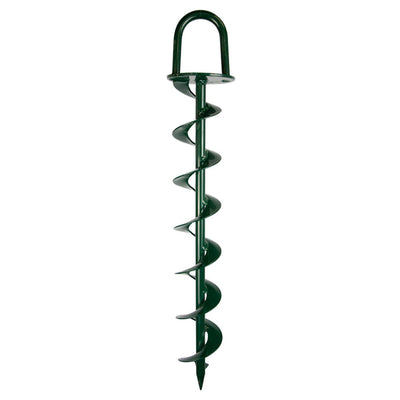Why You Need a Ground Anchor in Ensuring Property Protection
Why You Need a Ground Anchor in Ensuring Property Protection
Blog Article
Discover the Different Kinds of Ground Support for Your Next Job
When beginning on a building or landscaping project, recognizing the various types of ground anchors available is essential to guaranteeing both security and sturdiness (Ground Anchor). From auger supports, which master diverse soil problems, to risk supports designed for short-term setups, the options are various. Furthermore, concrete and screw anchors existing distinct benefits in details circumstances, while deadman supports are tailored for applications calling for resistance to lateral forces. The option of an appropriate support type can considerably affect the general success of your task, motivating additional exploration into their particular benefits and applications.

Auger Anchors
Auger supports are a prominent option in various construction and landscape design projects as a result of their special design and efficient securing capacities. These anchors include a helical screw-like shaft that is driven right into the ground, enabling a protected and secure hold. The spiral design promotes easy setup and maximizes resistance versus side pressures, making auger supports especially effective in applications such as secure fencing, short-term structures, and erosion control.
The installation procedure of auger supports is reasonably simple. They can be manually or mechanically installed, depending upon the size and called for depth. This adaptability enables their use in diverse soil conditions, from sandy to clayey surfaces. Furthermore, auger supports can be quickly eliminated and reused, which adds to their cost-effectiveness and sustainability.
One of the substantial advantages of auger anchors is their capacity to disperse tons evenly across the bordering soil, reducing the risk of dirt disturbance and lessening environmental effect. Furthermore, they are less vulnerable to loosening up or heaving in time contrasted to traditional securing approaches. Auger supports are a superb option for jobs needing resilient and dependable anchoring services.

Risk Anchors
When it involves securing structures in a selection of outdoor applications, stake supports use a dependable and simple solution. These anchors are usually created from durable materials such as steel or aluminum, made to hold up against ecological stress and anxieties while providing ideal security. Their easy design permits fast setup, making them an optimal option for irreversible or momentary anchoring requirements.
Risk anchors are particularly beneficial in safeguarding outdoors tents, canopies, and other light-weight structures against wind and weather condition. They operate by being driven right into the ground at an angle, developing a strong hold that stands up to pull-out forces - Ground Anchor. The efficiency of stake supports depends upon a number of aspects, including dirt type, wetness material, and the angle of installation
For added protection, lots of risk anchors feature accessory factors for ropes or straps, enabling stress changes as necessary. In applications such as landscape design or building and construction, they can successfully stabilize devices or structures on irregular terrain. In general, stake anchors supply a flexible and affordable option for protecting different outside installments, making them a preferred option for contractors and DIY enthusiasts alike.
Concrete Anchors
Concrete supports give a durable remedy for securing frameworks to concrete surface areas, making certain stability and safety in various applications. These anchors are vital for projects ranging from property constructions to large-scale industrial installations. They can be found in different types, including expansion supports, adhesive anchors, and undercut supports, each developed for specific tons needs and ecological conditions.
Glue anchors use high-strength epoxy or material to bond the support to the concrete, using remarkable load-bearing abilities, especially in split concrete situations. Undercut anchors develop a special form within the concrete, providing phenomenal holding power, specifically in applications where tensile tons are common.
Choosing the suitable concrete anchor entails taking into consideration variables such as the weight of the lots, the condition of the concrete, and environmental problems. Correct setup techniques are crucial to make certain ideal performance and dependability. When carried out appropriately, concrete supports substantially enhance the architectural integrity of various jobs, making them important in contemporary building and construction methods. Recognizing the certain requirements of your task will certainly assist in selecting the right kind of concrete support for the task.
Screw Anchors

Screw supports are a flexible securing service that can be successfully utilized in a selection of applications where conventional concrete anchors might not suffice. These supports are check that composed of a helical layout that enables them to be quickly driven into the ground, making them excellent for usage in soil and other substrates. Their one-of-a-kind sites framework supplies excellent holding power and resistance to pull-out pressures, making them suitable for various projects, from landscape design to architectural assistance.
Among the main advantages of screw supports is their simplicity of installation. They call for marginal equipment and can often be mounted without the requirement for excavation, which conserves both time and labor expenses. Additionally, screw supports can be removed and reused, supplying a lasting service for temporary applications.
Screw anchors are especially helpful in locations where soil problems are challenging, such as sandy or loosened soils. Their capacity to be installed at varying midsts enables personalization based on particular project demands. Overall, screw supports provide a trustworthy and efficient securing technique, making them a superb selection for designers and service providers seeking efficient services for their projects.
Deadman Anchors
Deadman supports work as a durable option for supporting structures in challenging conditions, specifically where conventional securing techniques may fall short. These supports are composed of big, heavy objects hidden underground, which develop resistance versus side forces. The design commonly involves a straight component, such as a block of concrete or a steel plate, buried in the soil, to which wires or straps are connected.
The performance Click This Link of deadman supports hinges on their capacity to disperse lots over a larger area, lowering the threat of failing in unpredictable soil conditions. They are particularly helpful in applications such as keeping wall surfaces, momentary frameworks, and slope stablizing, where soil motion can endanger the honesty of the framework.
Setup of deadman supports calls for careful planning to ensure they are positioned at the right depth and alignment, maximizing their load-bearing capability. While they may need even more labor and material than lightweight supports, their reliability in damaging problems makes them important for lasting tasks. Deadman anchors are versatile and can be adapted to different applications, making them a go-to selection for designers encountering unique challenges in their jobs.
Final Thought
Auger anchors succeed in diverse dirt conditions, while stake anchors fit short-term applications. For concrete surfaces, expansion and sticky supports provide trusted options, and screw supports provide adaptability in tough terrains.
Additionally, concrete and screw anchors present special benefits in specific scenarios, while deadman anchors are customized for applications needing resistance to lateral forces - Ground Anchor.Auger anchors are a prominent option in different building and landscaping tasks due to their special style and reliable anchoring capabilities. They come in different kinds, consisting of growth supports, adhesive supports, and undercut anchors, each developed for details load demands and environmental conditions
Glue supports use high-strength epoxy or resin to bond the support to the concrete, providing exceptional load-bearing capabilities, particularly in fractured concrete circumstances. Generally, screw anchors offer a efficient and trusted securing approach, making them a superb option for contractors and engineers seeking effective remedies for their projects.
Report this page